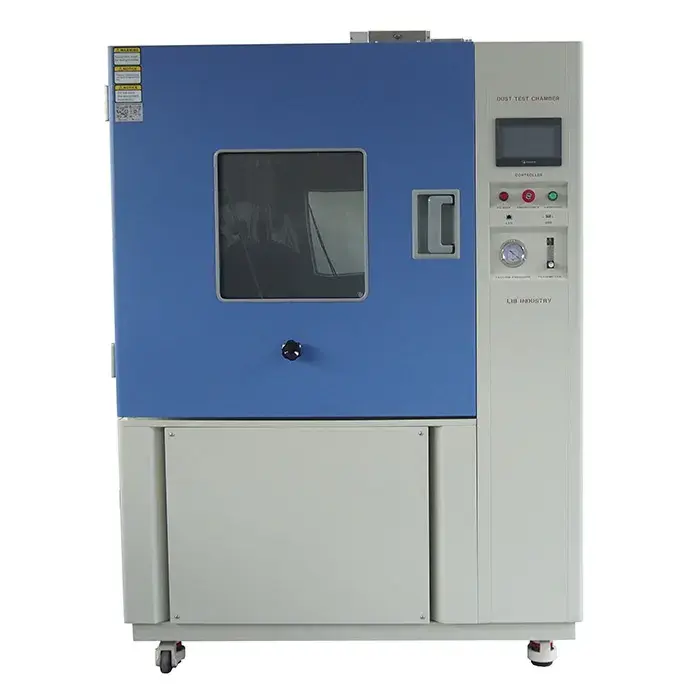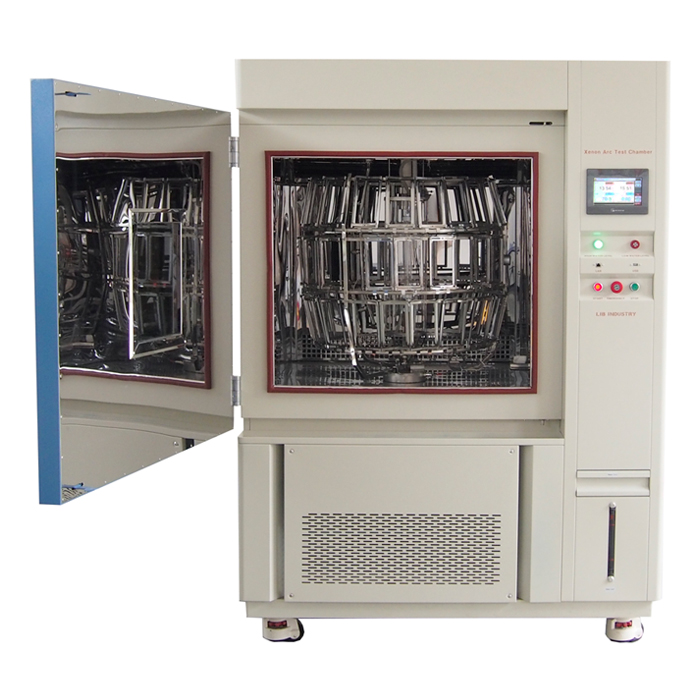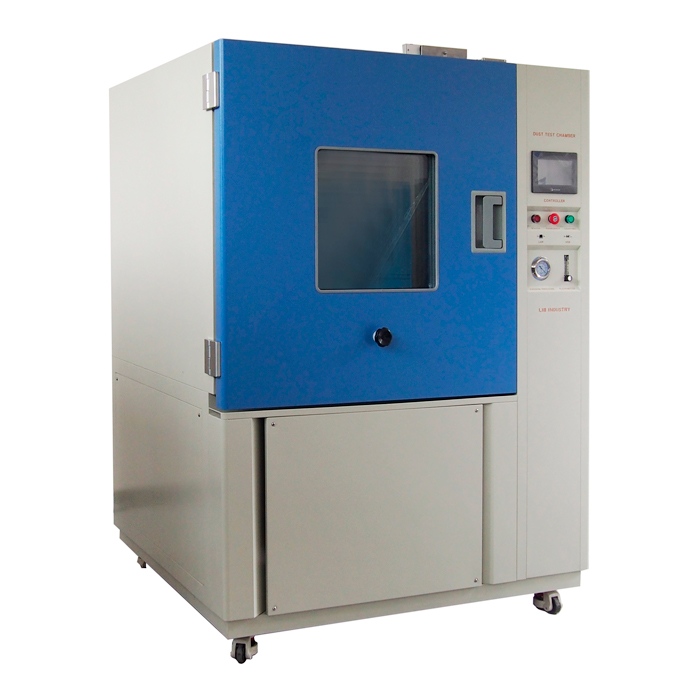What is the ASTM standard for vibration test?
Vibration testing is a critical component of product reliability testing, used to assess the durability of products under real-world conditions. The ASTM (American Society for Testing and Materials) standard for vibration testing provides comprehensive guidelines to ensure uniformity and consistency across various industries. This blog explores the specifics of the ASTM standard for vibration testing, its significance, and its practical implementation.
How Does the ASTM Standard for Vibration Testing Apply to Salt Spray Corrosion Test Chambers?
The ASTM standard for vibration testing, particularly ASTM D999, can be applied to salt spray corrosion test chambers to evaluate their resilience and effectiveness. These chambers are used to simulate corrosive environments for testing materials and coatings, and ensuring their durability under vibrational stress is crucial.
Overview of ASTM D999 in Relation to Corrosion Test Chambers
ASTM D999 is essential for testing the structural integrity and operational reliability of salt spray corrosion test chambers. This standard evaluates the chambers' ability to withstand repetitive shocks and vibrations that may occur during transportation or regular use.
Key Elements of ASTM D999 for Salt Spray Chambers
Test Apparatus: The vibration table and control system must accommodate the dimensions and weight of the salt spray chambers. Proper calibration ensures accurate simulation of real-world conditions.
Test Specimen: The salt spray chamber, including all its components, should be tested as a complete unit. Ensuring it is filled with a corrosive solution adds realism to the test.
Test Procedure: The chambers are subjected to specified vibration frequencies and amplitudes for a set duration. Observations on structural and functional integrity are recorded.
Data Analysis: Any damage or operational issues detected post-test are analyzed to determine the chamber's resilience.
Reporting: Comprehensive documentation includes the test conditions, specimen details, and observed results to validate the chamber's performance.
Why is Vibration Testing Important for Salt Spray Corrosion Test Chambers?
Salt spray corrosion test chambers are designed to simulate harsh environments. Ensuring their durability through vibration testing is vital for several reasons.
Ensuring Structural Integrity
The chambers must withstand vibrations without compromising their structural integrity. This ensures they can provide consistent testing conditions over their lifespan.
Salt spray corrosion test chambers are subjected to a variety of physical stresses during their operational life, from the initial transportation to the daily vibrations experienced in a lab setting. Ensuring their structural integrity is paramount because any compromise could lead to leaks or inconsistent testing conditions, rendering the results invalid. The vibration testing standards, such as those defined in ASTM D999, focus on identifying these vulnerabilities before they can impact performance.
Enhancing Operational Reliability
Operational reliability is crucial for these chambers. Vibration testing helps identify potential weaknesses in the design that could lead to malfunctions during regular use.
Salt spray corrosion test chambers often operate continuously over extended periods, exposing materials to corrosive environments for days or weeks at a time. Even minor design flaws can lead to significant operational failures. Vibration testing helps manufacturers identify and rectify these issues early, ensuring the chambers remain functional and reliable throughout their lifespan. This is particularly important for industries where precise and consistent test conditions are necessary for compliance and safety, such as automotive or aerospace sectors.
Facilitating Compliance with Industry Standards
Many industries have stringent requirements for corrosion testing. Adhering to vibration testing standards ensures the chambers meet these regulatory demands, providing confidence in their reliability and effectiveness.
Adherence to vibration testing standards is not just about ensuring product reliability but also about meeting the regulatory demands of various industries. For instance, automotive manufacturers need to ensure that parts will withstand both vibrational and corrosive stresses to ensure safety and longevity. By complying with ASTM D999 and similar standards, manufacturers of salt spray corrosion test chambers can assure their clients that their equipment meets or exceeds industry expectations.
What Are the Differences Between ASTM and ISO Standards for Vibration Testing?
While ASTM standards are widely used in the United States, ISO standards are more common internationally. Understanding the differences between these standards helps in selecting the appropriate one for specific needs.
Comparison of ASTM D999 and ISO 8318
Both standards provide guidelines for vibration testing but differ in their scope and specific requirements.
Scope: ASTM D999 focuses on repetitive shock testing, while ISO 8318 covers a broader range of vibration conditions.
Test Apparatus: ISO 8318 provides more detailed specifications for the test apparatus.
Test Procedure: ISO 8318 includes additional steps for more comprehensive testing.
Data Analysis: Both standards offer guidelines for analyzing test data, but ISO 8318 requires more detailed reporting.
Reporting: ISO 8318 mandates more comprehensive documentation, beneficial for international compliance.
Selecting the Appropriate Standard
Manufacturers must consider their target markets and regulatory requirements when choosing between ASTM and ISO standards. For global distribution, adhering to ISO standards may provide broader compliance and acceptance.
The choice between ASTM and ISO standards often depends on the market and specific industry requirements. For instance, products primarily sold within the United States might adhere to ASTM standards due to their widespread acceptance. Conversely, products aimed at international markets might require compliance with ISO standards to meet the regulatory needs of different countries.
How Do Vibration Tests Integrate with Salt Spray Corrosion Testing?
Integrating vibration testing with salt spray corrosion testing offers a more holistic assessment of a product's durability. This combined approach simulates real-world conditions more accurately.
Combined Testing Procedures
Combining vibration and corrosion testing involves subjecting the test specimen to vibration stress while exposed to a corrosive environment. This dual approach helps identify potential weaknesses that may not be evident when tests are conducted separately.
In practice, a product might first undergo a salt spray test to simulate a corrosive environment and then be subjected to vibration testing while still in the same condition. Alternatively, the two tests can be conducted simultaneously. This integration provides a more comprehensive understanding of how the product will perform under real-world conditions, where it will likely face both types of stresses concurrently.
Benefits of Integrated Testing
Realistic Simulation: Combining tests provides a more realistic simulation of actual conditions the product will face.
Comprehensive Evaluation: Integrated testing offers a thorough evaluation of both structural and functional integrity under combined stressors.
Enhanced Reliability: Products that pass integrated testing are more likely to perform reliably in real-world scenarios.
Realistic Simulation
By combining vibration and corrosion testing, manufacturers can create a more realistic simulation of the conditions products will face in the field. For instance, an automotive component exposed to road salt in a cold climate will also experience vibrations from the vehicle's movement. Testing both simultaneously ensures that any interactions between these stressors are identified and addressed.
Comprehensive Evaluation
Integrated testing allows for a thorough evaluation of the product's structural and functional integrity under conditions that closely mimic its operational environment. This approach can reveal weaknesses that might not be apparent when each test is conducted in isolation. For example, a coating that performs well in a static salt spray test might fail when subjected to vibrations that cause micro-cracks and subsequent corrosion.
Enhanced Reliability
Products that pass integrated testing are more likely to perform reliably in real-world scenarios. This reliability is critical for maintaining safety, performance, and customer satisfaction. For industries where product failure can have severe consequences, such as aerospace or medical devices, the additional assurance provided by integrated testing is invaluable.
Conclusion
The ASTM standard for vibration testing is crucial for ensuring the durability and reliability of products subjected to vibrational stress. When applied to salt spray corrosion test chambers, it ensures these chambers can withstand real-world conditions, maintaining their structural integrity and operational reliability. By understanding and implementing these standards, manufacturers can enhance product quality, comply with regulatory requirements, and ensure consumer satisfaction.
For more information on the ASTM standard for vibration testing and its application in corrosion test chambers, feel free to contact ellen@lib-industry.com.
References
ASTM International. "ASTM D999 - Standard Test Methods for Vibration Testing of Shipping Containers."
ISO. "ISO 8318: Vibration Testing of Complete, Filled Transport Packages."
Defense Logistics Agency. "MIL-STD-810: Environmental Engineering Considerations and Laboratory Tests."
Techni-Torque. "Understanding Vibration Testing Standards."
Safe Load Testing Technologies. "Comparison of ASTM, ISO, and MIL-STD Vibration Testing Standards."
Smithers. "The Importance of Vibration Testing."
NTS. "Vibration Testing: Standard Methods and Procedures."
Element. "A Guide to Vibration Testing Standards."
Intertek. "Vibration Testing Services."
REL Inc. "Vibration Testing: Why It Matters and How It's Done."
For further inquiries, contact ellen@lib-industry.com.







.webp)



